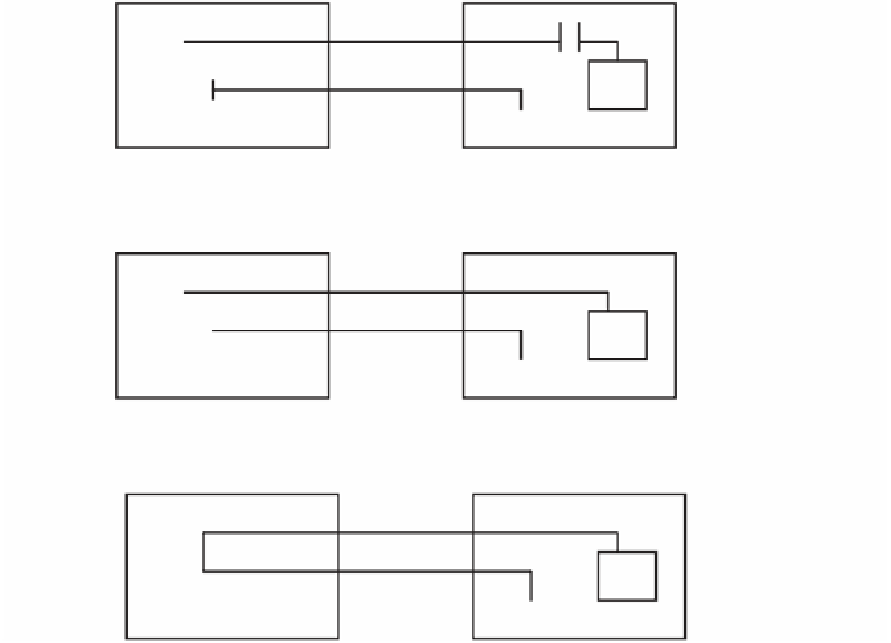Information Technology Reference
In-Depth Information
difference between ground start and loop start is that ground start requires the closing of
the loop at both locations. Ground start is commonly used by PBXs.
The standard way to transport voice between two telephone sets is to use tip and ring lines.
Tip and ring lines are the twisted pair of wires that connect to your phone via an RJ-11 con-
nector. As shown in Figure 14-4, the CO switch grounds the tip line. The PBX detects that
the tip line is grounded and closes the loop by removing ground from the ring line.
Tip
TIP Grd
Det
Open Loop
Ring
Gen
Ring
-48 DC Battery
PBX
CO or FXS Module
Tip
TIP Grd
Det
CO grounds
the tip line.
Ring
Gen
Ring
-48 DC Battery
PBX
CO or FXS Module
Tip
TIP Grd
Det
PBX closes
loop, removes
ring ground.
Ring
Gen
Ring
-48 DC Battery
Figure 14-4
Ground-Start Signaling
E&M Signaling
E&M is an analog signaling technique often used in PBX-to-PBX tie lines. E&M is receive
and transmit, or more commonly called Ear and Mouth. Cisco routers support four E&M
signal types: Type I, Type II, Type III, and Type V. Types I and II are most popular on the
American continents. Type V is common outside North America.
There are also three forms of E&M dial supervision signaling to seize the E&M trunk:
Immediate start:
This is the most basic protocol. In this technique, the originating
switch goes off-hook, waits for a finite period of time (for example, 200 ms), and then
sends the dial digits without regard for the far end.
■
Wink start:
-
■
(which is interpreted as an indication to proceed), and then sends the dial digits.








